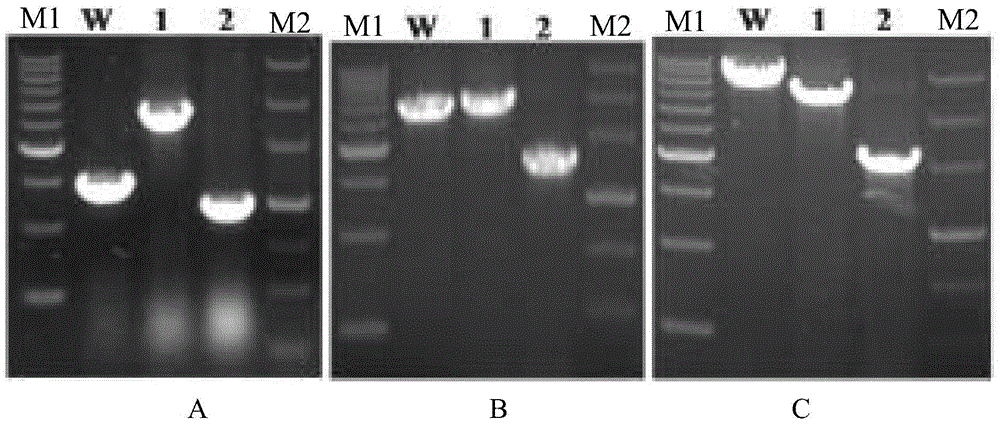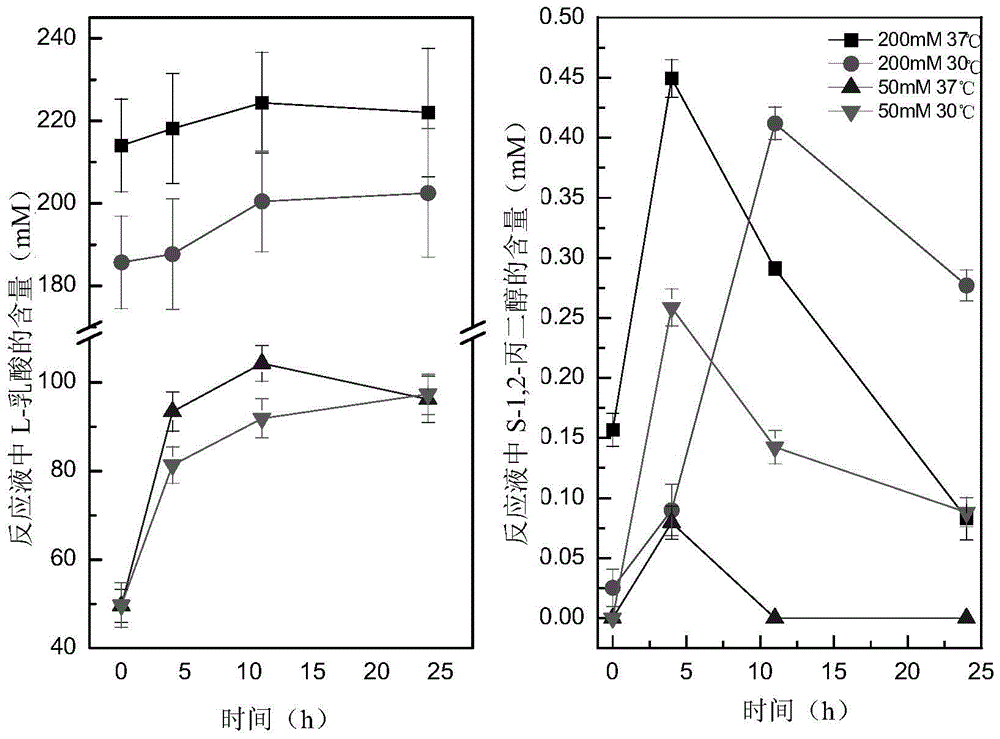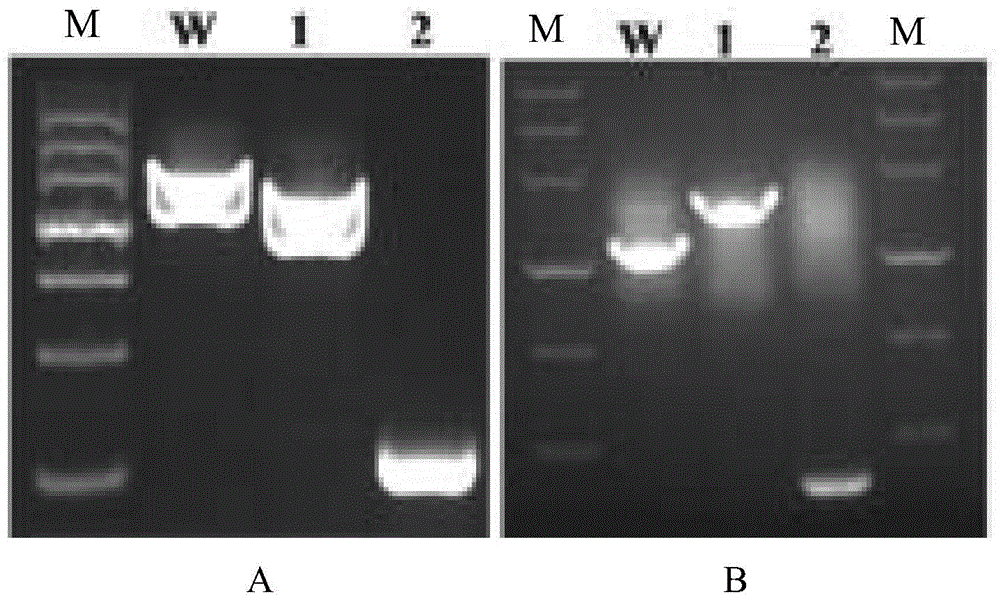Recombinant Escherichia coli for synthesizing s-1,2-propanediol using L-lactic acid and its construction method
A technology for recombining Escherichia coli and Escherichia coli, applied in the field of microorganisms, can solve problems such as unindustrial application
- Summary
- Abstract
- Description
- Claims
- Application Information
AI Technical Summary
Problems solved by technology
Method used
Image
Examples
Embodiment 1
[0060] Example 1. Construction and functional identification of recombinant Escherichia coli for the synthesis of S-1,2-propanediol using L-lactic acid
[0061] 1. Construction and functional identification of recombinant Escherichia coli BWPDO1
[0062] 1. Construction of recombinant E. coli BWPDO1
[0063]Three key enzymes involved in the catalysis were identified according to the pathway for the synthesis of S-1,2-propanediol from L-lactic acid: propionyl-CoA transferase (Pct, amino acid sequence 14) catalyzed the conversion from L-lactic acid to L-lactate. Acyl-CoA reaction, CoA-dependent succinate semialdehyde dehydrogenase (PdcD, amino acid sequence 13) catalyzes the pathway from L-lactyl-CoA to L-lacaldehyde and 3-hydroxypropionate dehydrogenase (MmsB , the amino acid sequence is sequence 12) catalyzes the reaction of L-lactaldehyde to finally generate S-1,2-propanediol.
[0064] Design idea: knock out the lldD gene (sequence 5) of E. coli BW25113-△poxB and replace th...
PUM
 Login to view more
Login to view more Abstract
Description
Claims
Application Information
 Login to view more
Login to view more - R&D Engineer
- R&D Manager
- IP Professional
- Industry Leading Data Capabilities
- Powerful AI technology
- Patent DNA Extraction
Browse by: Latest US Patents, China's latest patents, Technical Efficacy Thesaurus, Application Domain, Technology Topic.
© 2024 PatSnap. All rights reserved.Legal|Privacy policy|Modern Slavery Act Transparency Statement|Sitemap



